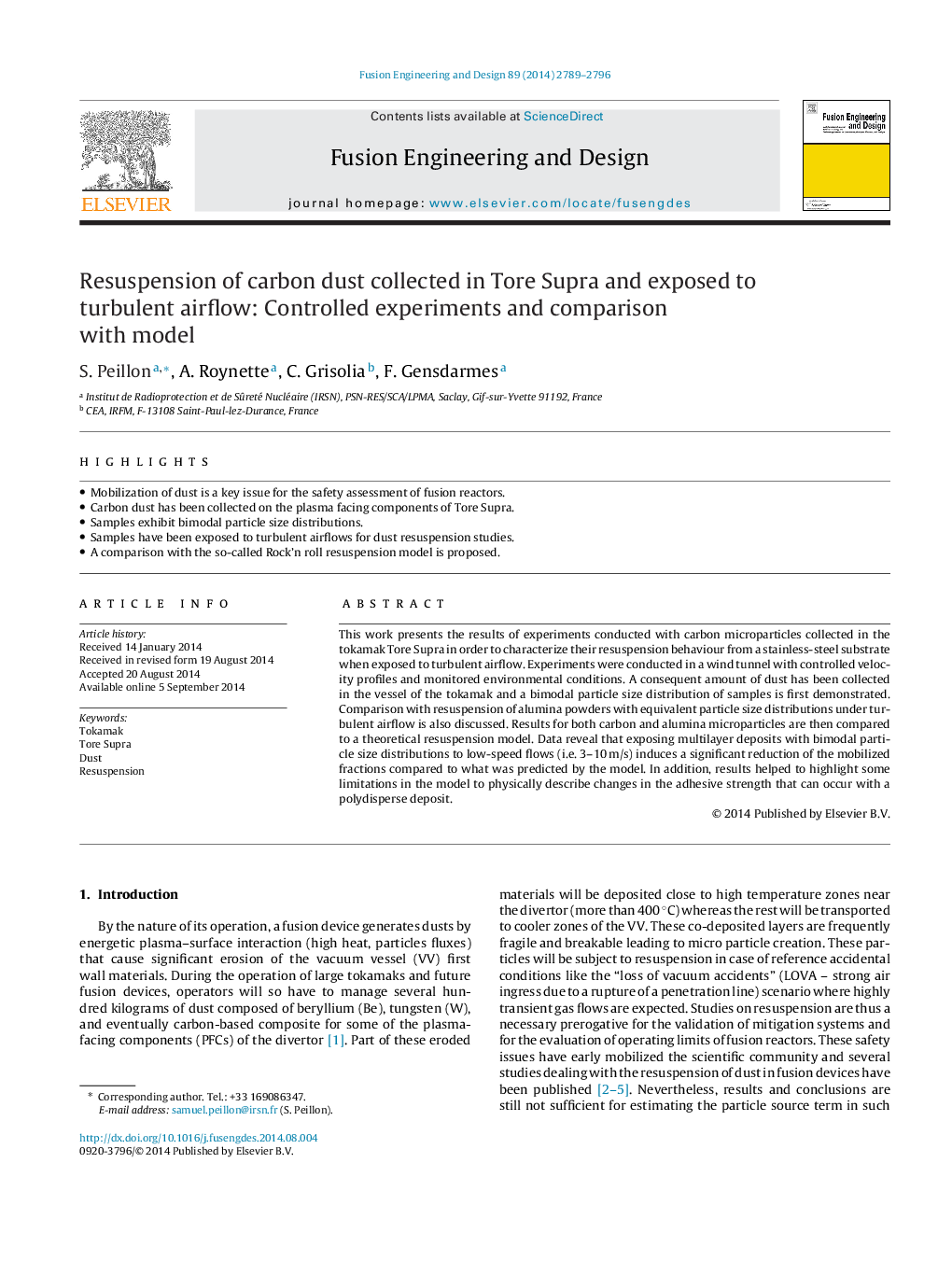| Article ID | Journal | Published Year | Pages | File Type |
|---|---|---|---|---|
| 271284 | Fusion Engineering and Design | 2014 | 8 Pages |
•Mobilization of dust is a key issue for the safety assessment of fusion reactors.•Carbon dust has been collected on the plasma facing components of Tore Supra.•Samples exhibit bimodal particle size distributions.•Samples have been exposed to turbulent airflows for dust resuspension studies.•A comparison with the so-called Rock’n roll resuspension model is proposed.
This work presents the results of experiments conducted with carbon microparticles collected in the tokamak Tore Supra in order to characterize their resuspension behaviour from a stainless-steel substrate when exposed to turbulent airflow. Experiments were conducted in a wind tunnel with controlled velocity profiles and monitored environmental conditions. A consequent amount of dust has been collected in the vessel of the tokamak and a bimodal particle size distribution of samples is first demonstrated. Comparison with resuspension of alumina powders with equivalent particle size distributions under turbulent airflow is also discussed. Results for both carbon and alumina microparticles are then compared to a theoretical resuspension model. Data reveal that exposing multilayer deposits with bimodal particle size distributions to low-speed flows (i.e. 3–10 m/s) induces a significant reduction of the mobilized fractions compared to what was predicted by the model. In addition, results helped to highlight some limitations in the model to physically describe changes in the adhesive strength that can occur with a polydisperse deposit.
